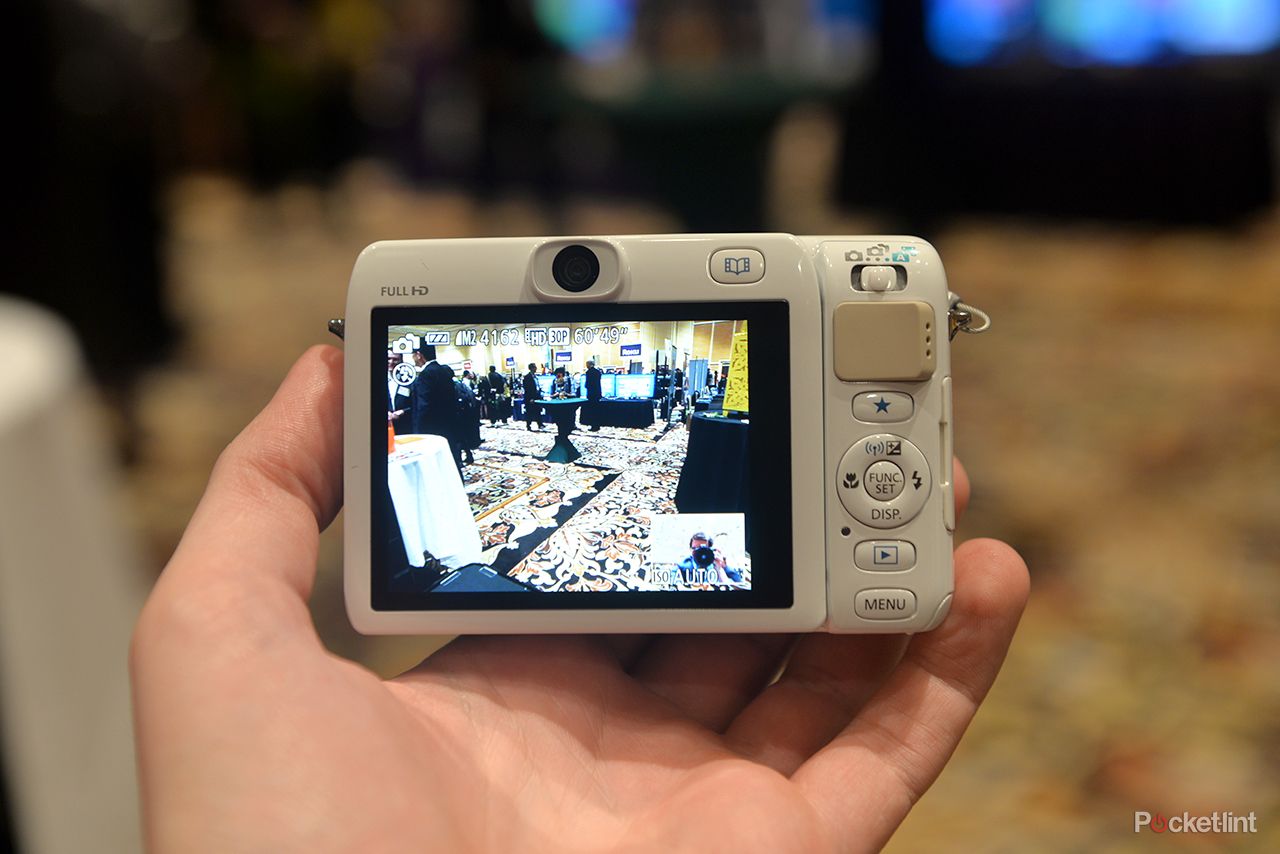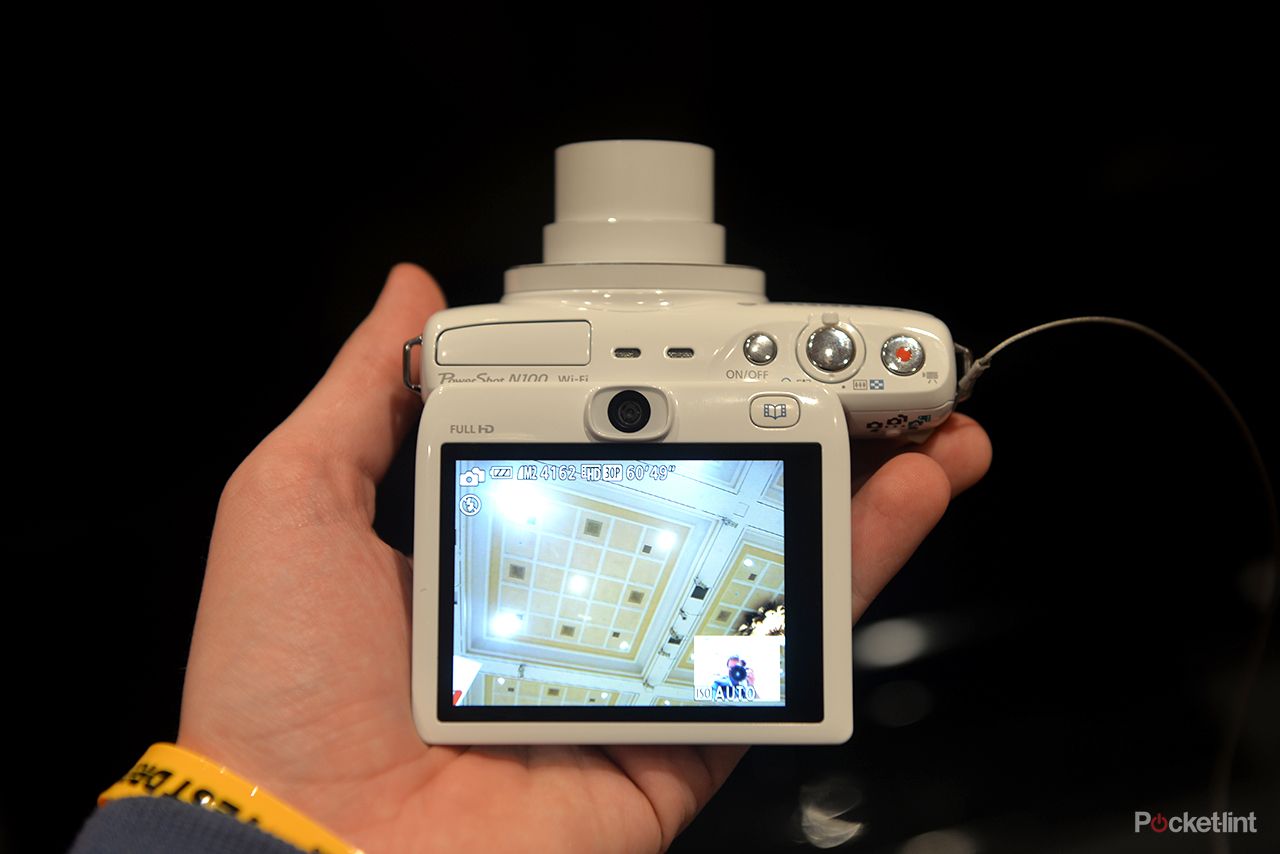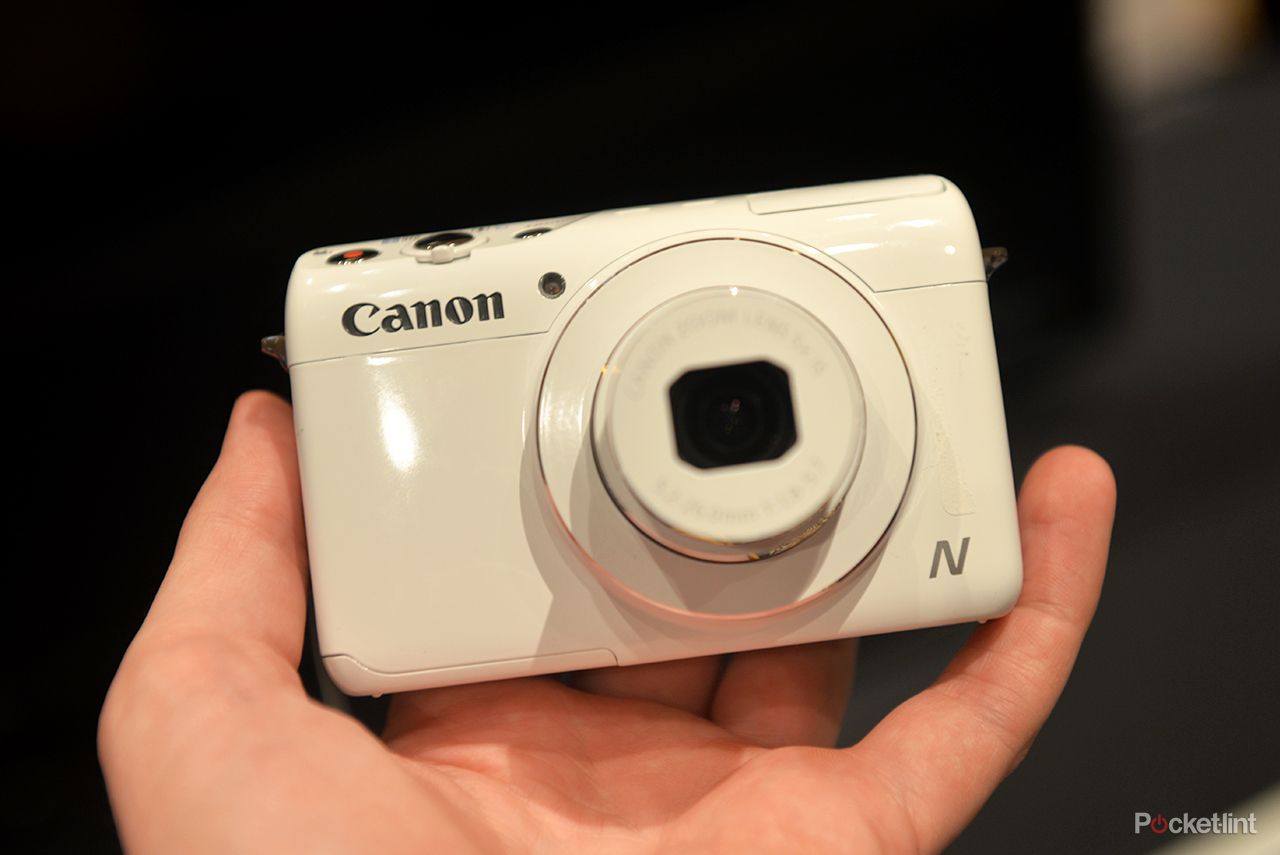Canon continues to let its N-series engineers run wild with their imaginations with the release of the PowerShot N100. And we got to test it out at the Consumer Electronics Show 2014 in Las Vegas.
Unlike the square form PowerShot N that came before it, the N100 looks like a relatively normal compact camera at first glance. And that viewfinder-esque shape on the rear is actually a second camera. Which sort of makes the N100 a "camera camera".

Almost like the stills version of the Panasonic W850 camcorder, the N100 makes it possible to snap selfies while you’re shooting whatever is in front of you. The resulting shot is then positioned in the corner of the main shot automatically.
READ: Panasonic W850 hands-on
But just like that Panasonic, that's rather silly, isn’t it? The second camera isn’t able to deliver full-size images to utilise separately, and this is assuming you want to take constant selfies in the first place. The feature can be switched off altogether from within the menus and there are options for different sizes and placements if you want to be more experimental with the results.
As the rear screen is on a vertical tilt-angle bracket it’s possible to position it for waist-level work. Perfect for adding in a shot-from-below double chin level.

As much as we mock there are plenty of features on board that make the N100 sound like an attractive camera, such as the f/1.8 maximum aperture at 24mm and built-in Wi-Fi. But just like the first N model we don’t really feel an affinity with what the camera is about. The build is all glossy plastic, it comes in a white finish only and its main point of interest is also the one we don’t see the necessity for.
In terms of operation it’s able to cater for point-and-shoot tasks with relative ease, although the autofocus isn’t as lightning fast as some of the higher-spec Canon compact models. It’s still good enough, though, as we found out when snapping around a dimly lit conference hall.
A fun experiment, but given the £349 price it’s one we find somewhat baffling.

